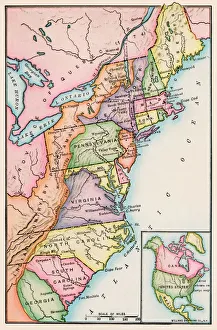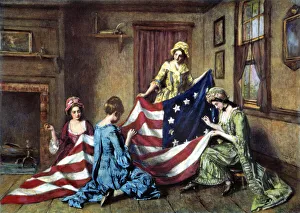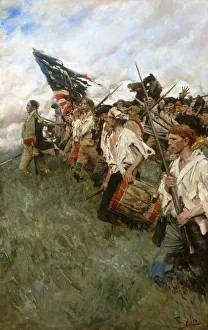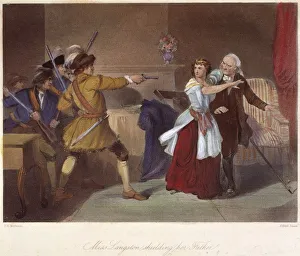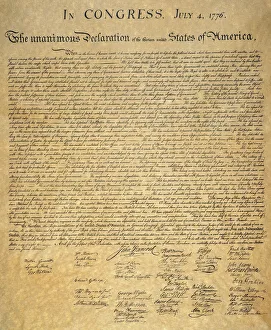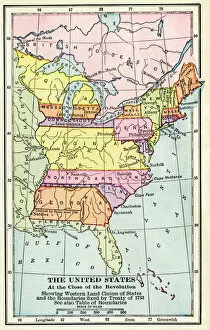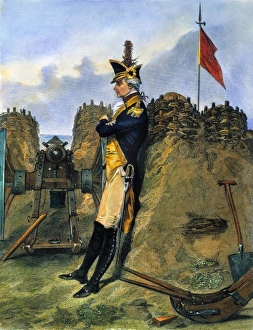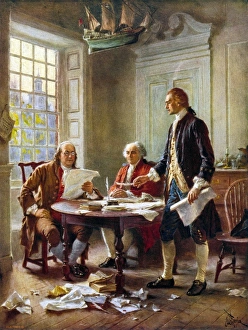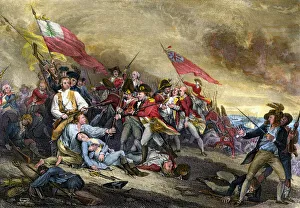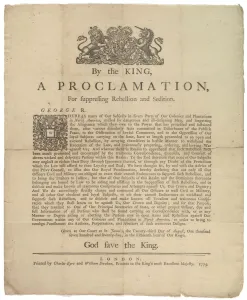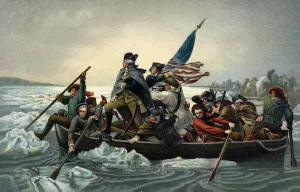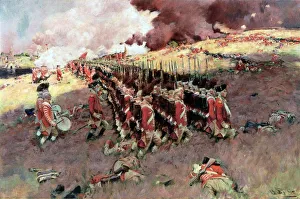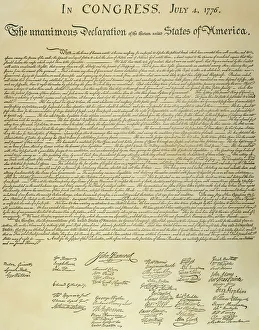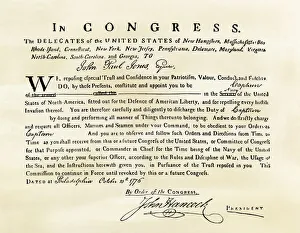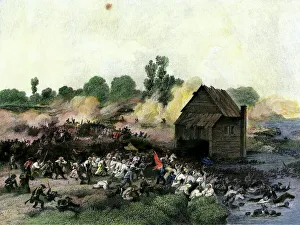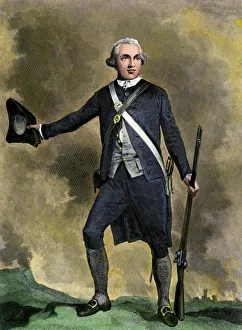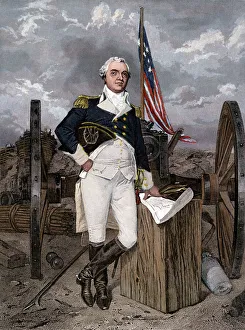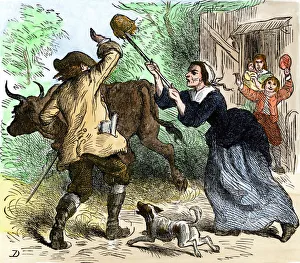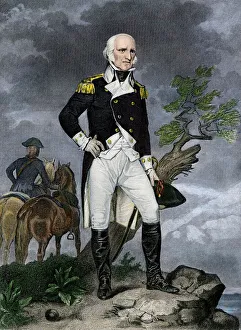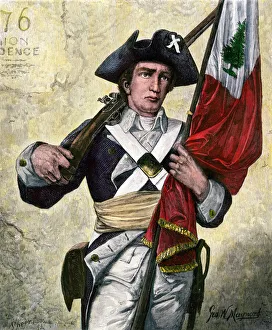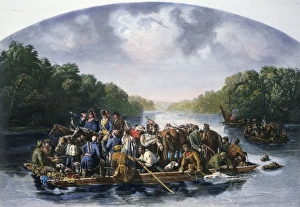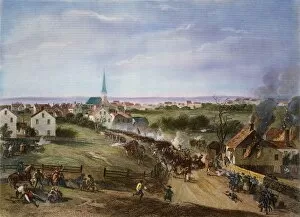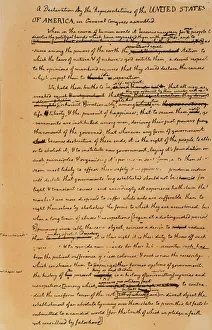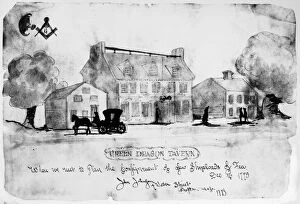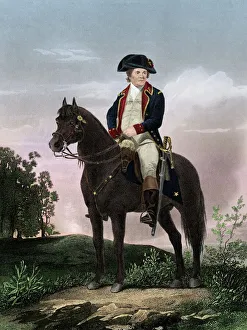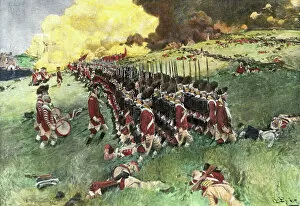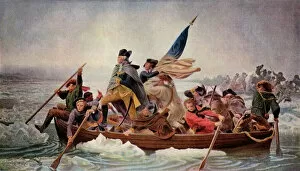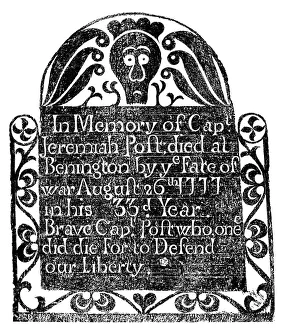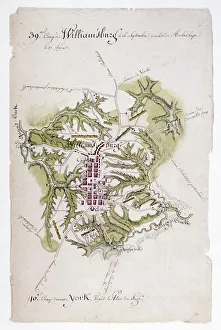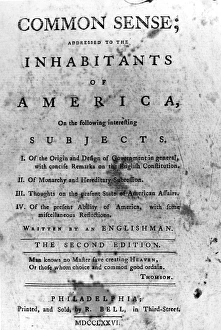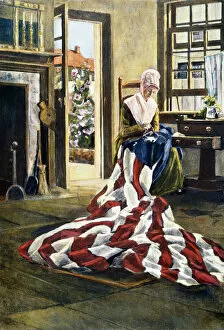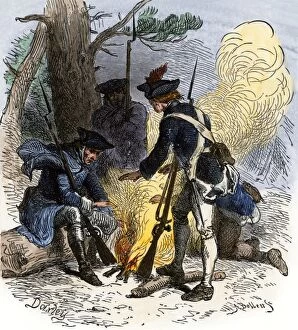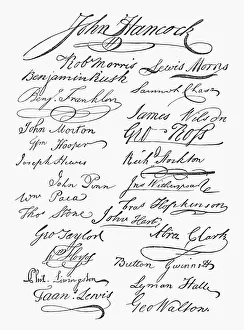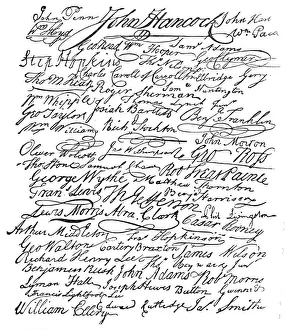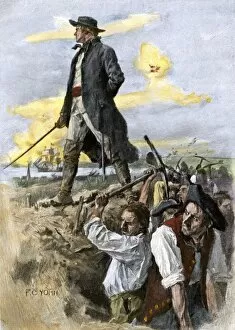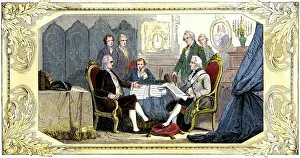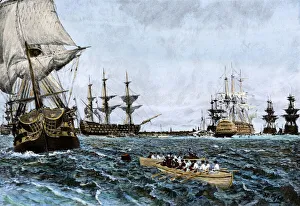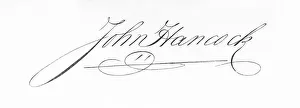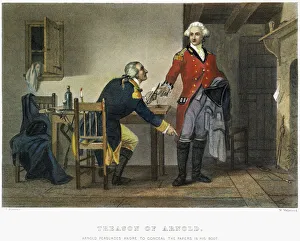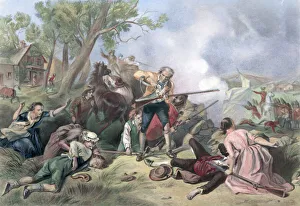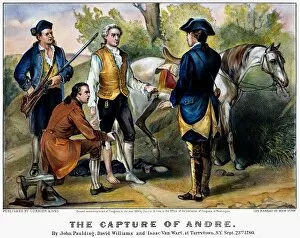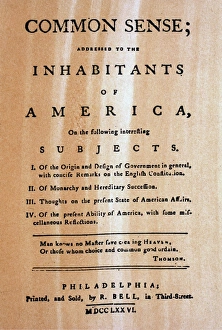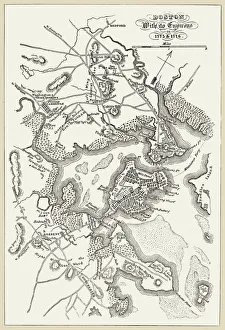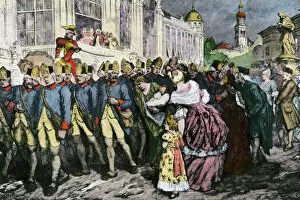American Revolution Collection
"The American Revolution: A Nation's Struggle for Independence" In 1776
All Professionally Made to Order for Quick Shipping
"The American Revolution: A Nation's Struggle for Independence" In 1776, the Thirteen original colonies embarked on a historic journey towards freedom and self-governance. Betsy Ross, with her skilled hands, sewed the first American flag, symbolizing unity and hope for a new nation. Henry Mosler's painting "The Nation Makers" vividly captures the Battle of Brandywine in 1777 during the Revolutionary War. It showcases the courage and determination of those who fought valiantly to secure liberty. Howard Pyle's masterpiece "Battle of Bunker Hill" immortalizes one of the earliest conflicts that ignited the revolution. The intense brushstrokes convey both sacrifice and resilience exhibited by patriots defending their newfound ideals. Amidst this chaos, Laodicea Dicey Langston emerges as an unsung hero, protecting her elderly father from Loyalist troops due to his unwavering support for the revolutionary cause. Her bravery exemplifies ordinary citizens' extraordinary contributions during these tumultuous times. EXPL2A-00164 depicts another significant moment -the Battle of Concord in 1775- where colonists stood united against British oppression. This engraving serves as a reminder that every skirmish played a vital role in shaping America's destiny. George Washington crossing the Delaware River on December 25th, 1776 is an iconic image etched into history books. This daring maneuver marked a turning point in favor of American forces during their war for independence. On July 4th, 1776, our forefathers signed a copy of the Declaration of Independence -a document that proclaimed liberty as an unalienable right bestowed upon all individuals. Its significance still resonates today as we celebrate our nation's birth each year. Alonzo Chappel's colored engraving portrays British soldiers retreating from Concord after facing fierce resistance from determined colonial fighters on April 19th, 1775.

